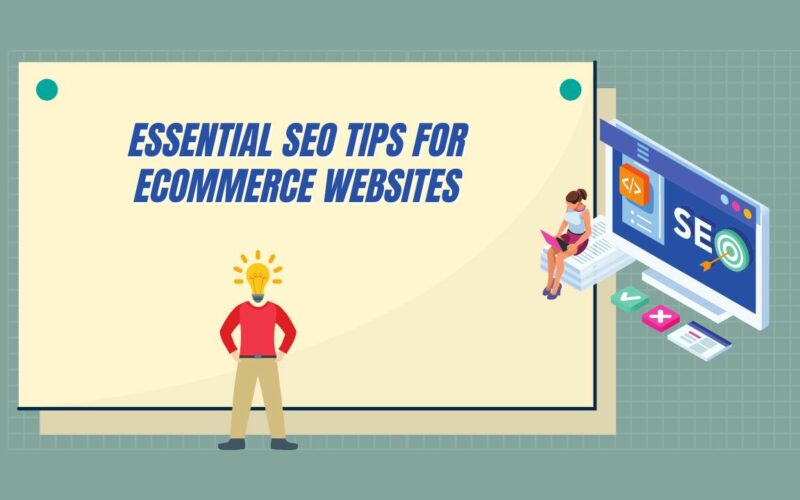Getting your store more organic traffic can significantly impact your sales.
You could go the route of digital ads, but with Product Listing Ads (PLAs) becoming more expensive by the day, getting into keyword bidding wars with more prominent eCommerce brands is not feasible.
This is where eCommerce SEO comes in. Search Engine Optimization (SEO) is one of the best opportunities to become less reliant on paid channels, rank higher in Google searches, and get more organic traffic to your website.
Bringing in more sales without risking your money on advertising can be a great way to build your e-commerce empire. While that all sounds great, it’s easier said than done. You can’t do any of that without powerful SEO for your online store.
Here are 5 essential SEO tips for eCommerce websites to boost organic traffic and sales for all levels of expertise.
Table of Contents
Site Structure
The structure of your website is the foundation of a successful SEO strategy for eCommerce sites. Without structure, prospects could easily be confused or discouraged and immediately leave your site (bounce). Google doesn’t like that.
When potential prospects type a query, Google bots crawl websites looking for high-quality, relevant content for its user. It detects deceptive or manipulative behavior, such as repeating keywords over and over, or any links intended to manipulate rankings in search results. While placing keywords and acquiring backlinks is a normal part of the economy of the web for advertising and sponsorship purposes, avoiding violation of this policy is simple. Organic, qualified links with a no-follow (rel=”no follow” attribute value to the <a> tag) and thoughtful SEO site structure.
Some basic but very evident site structure strategies include
- HTTPS: Is your site HTTP or HTTPS? This protects customer’s information, trusted by Google, and helps with SEO efforts
- Mobile: Google released a mobile device crawler back in 2019 – while Google is notoriously secretive about how it scans and ranks websites, there are a few things they look for: similar content on mobile and desktop versions, images and videos are optimized for mobile viewing, and any on page ads don’t inhibit the mobile experience
- Site Speed: Be sure to reduce file size on images and videos. While this can be tricky and clearly reduce quality, consider hosting images, audio, and videos on a Content Management System (CMS). Additionally, avoid using any extra code and using shorter variables and functions
- Alt Tags: Bot crawlers can’t see images, therefore alt text on all of your images acts as a form of communication as to what’s in the image. It also helps blind and visually impared people understand what’s in your images as well
- 301 Redirect: If you have any expired or discontinued products, utilizing a 301 redirect will direct users to a newer product page instead of a dead end
- Tags: Your title tag should be 60-70 characters and your keyword included within it. Be sure to also use header tags on product pages (<h1>Welding Helmet</h1>), this organizes content for readers and SEO
- Internal Linking: Using internal links to suggest related products or products that other users bought drives more relevant sales and better your site structure
- Duplicate Content: Ecommerce websites particularly meet this issue because they deal with a lof of product descriptions, and these descriptions are often provided by the seller, and can distribute those products to different websites. To avoid this, write unique product descriptions and add detail. Consider running a website audit to determine wherein duplicate content may lie
Keywords & Content Creation
Your content and keywords are just as important as the structure. You’ll want to ensure your products and web pages are optimized for keywords your target audience may be searching for. Make sure you have at least 1,000 words of content on all product and category pages and use your keyword naturally 3-5 times throughout. Writing in-depth product descriptions will also help Google drive organic search traffic and rank you.
But how do you determine the right keywords to use?
A good place to start is with what you know. The product itself, whatever it may be, can be pretty broad, especially in terms of competing with larger, prominent companies. So, be specific. (continuing on our earlier example; “Miller Digital Infinity Black Ops Helmet”) Additionally, utilize tools such as Ahrefs or Semrush to provide you with more in-depth insights into keywords, traffic trends, and where your competition stands.
Be sure to come up with a plan of action for targeting more keywords, key phrases, and keyword variations on your product and webpages. Include keywords in product descriptions, category pages, FAQs, product titles, and blogs. Remember, don’t overload it, but be mindful not to miss out on keyword opportunities.
Lastly, if you haven’t already, invest time and effort into a blog, regardless of industry. Hubspot found companies that write 16+ blogs monthly generated more inbound traffic.
Google Search Console
Ensure your products are indexed with Google Search Console. Running your product pages through this tool will help Google discover all of the products on your website. The product pages are shared with the Googlebot crawler and can be used as starting points for crawls, potentially creating a passive SEO effort.
Search console helps to ensure the healthy operation of your site. It allows easy monitoring, resolve server errors, site load issues, and even security issues. Any site maintenance or adjustments to your website should be ran through Search Console to ensure and maintain a smooth search performance.
Backlinks
Touched on earlier, backlinks are a significant organic ranking factor to major search engines, and Google’s bot crawler is highly likely detect any backlink manipulation. A backlink is when another website links to one of your pages, products, blogs, or other content. This signals to Google that this site views your site as authoritative and worth linking to – the more quality and quantity of backlinks, the more likely you are to rank.
Content Marketing can provide the strongest passive link building results. Consider creating surveys, analyze the findings, then publish and share with your audience. Low effort, high impact.
Technical SEO is Crucial
Don’t be afraid to get a little technical – one of the most important features to look into is structured data markup.
Structured Data Markup
Structured data markup is what provides even more details about your products before a user lands on your site. It also helps you rank for rich snippets, a more visual, more informative appearance feature in search results and common in the ecommerce world.
This can appear as star ratings or review count greatly benefit SEO, but also significantly improve click-through when you appear in search results. Half of online shoppers wouldn’t look twice at a product with less than 4-stars. So, how do you add structured data markup?
There are two ways you can add structured data to start showing up for your products. You can either manually add it if you’re tech savvy and want to give it a shot, or through an app plugin. While the markup is automatically added to your products, you’ll likely have to pay a monthly fee for these apps.
Robots.txt and Sitemap.xml
These are essential files that can help search engines better understand your particular website and index it correctly.
An XML sitemap is essentially a blueprint of the most important parts of your website. While not mandatory, it ensures web crawlers will crawl and index the content you consider most pertinent and not an irrelevant blog post from 5 years ago. Crawlers should be able to find the pages on your site if it’s properly linked internally and externally, however an XML sitemap guarantees.
A robots.txt file works as instructions for crawlers on which pages to crawl, which pages to avoid, or instructions to block specific bots from crawling entirely. When bots crawl a site, the robots.txt file is what’s often visited first.
To learn about how to implement these files, Google has instructions to do so.
SEO for Ecommerce Websites
Growing organic traffic can be difficult and time consuming, but not impossible. SEO matters just as much for e-commerce as it does for any other business. By following even just a few of the e-commerece SEO practices listed in this article, you’re bound to increase your organic traffic. While you don’t receive immediate results like your PPC campaigns, SEO is and has always been a long-game with concrete, trackable, quality results with focus.
Target the right customers, grow organic traffic, and create genuine, organic content if you want to rank. From product descriptions and external links, to blog posts and infographics, there are fortunately many avenues of opportunity to put your business on page one in the SERPs.
While some efforts are not high up on the list of SEO considerations, these measures should not be overlooked. Taking the time to create a sitemap, write original and detailed product descriptions, and make sure your website is crawled and ultimately indexed, you will experience a positive impact on your overall SEO.
Follow these 5 essential SEO tips for eCommerce websites in this post to strengthen your SEO and bring in more sales than ever before.




